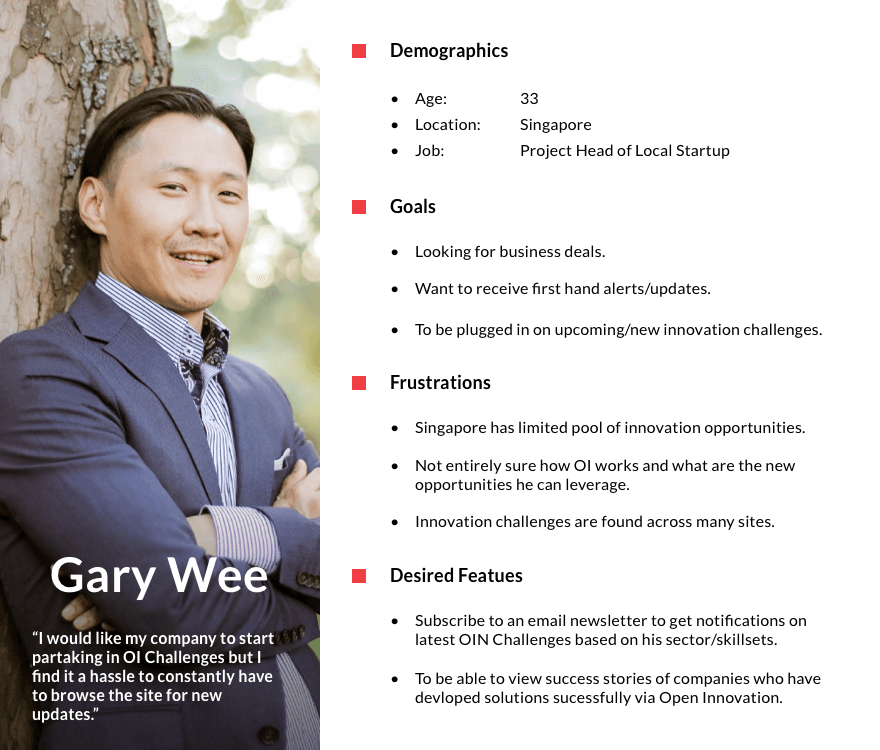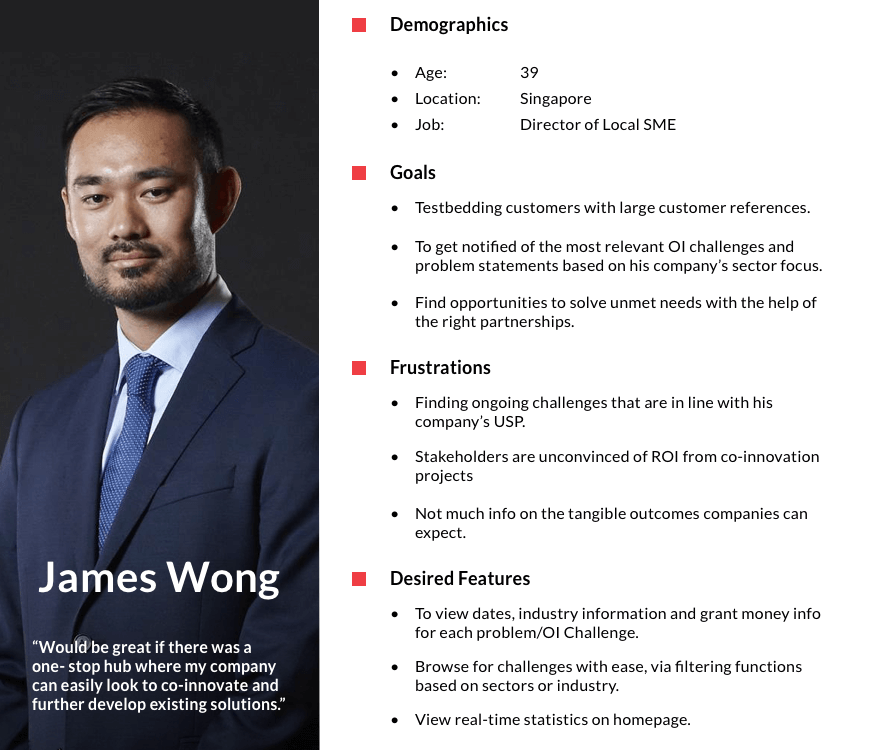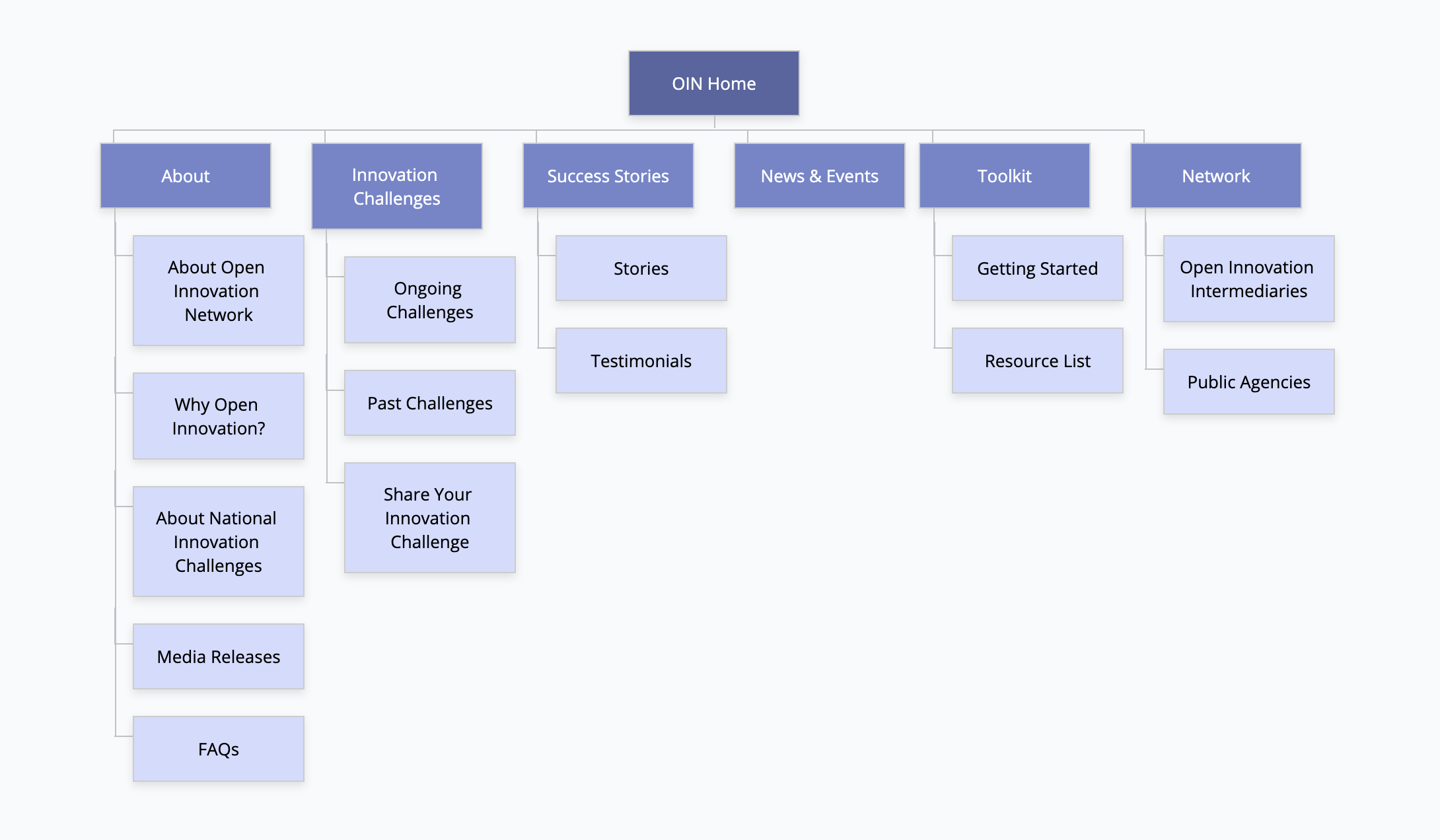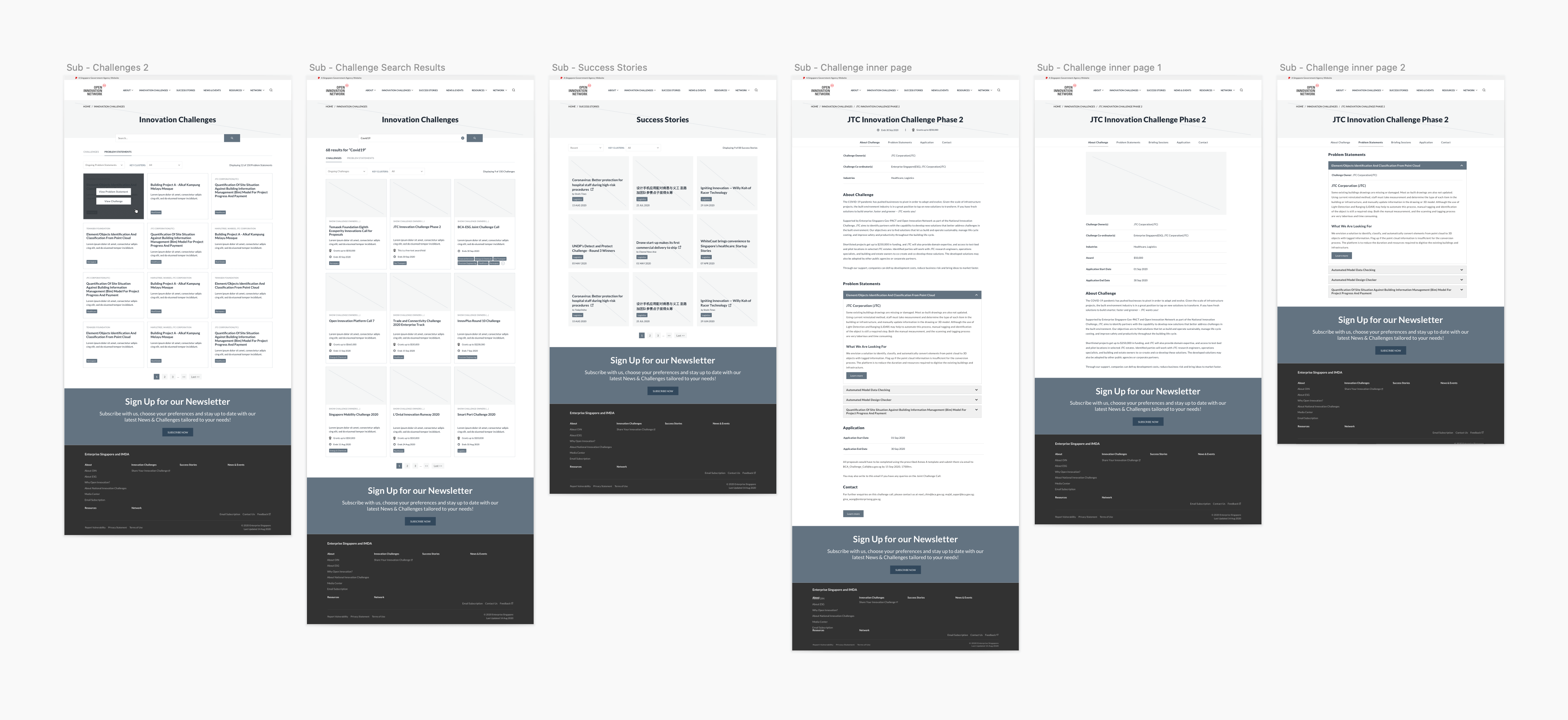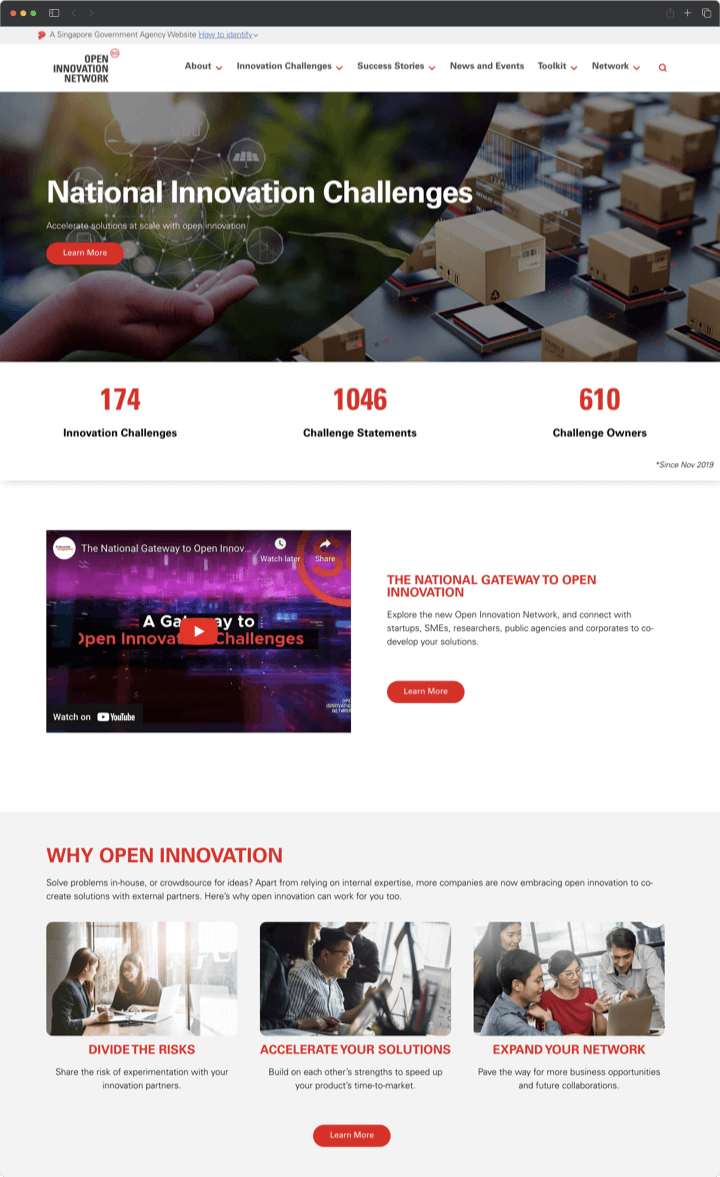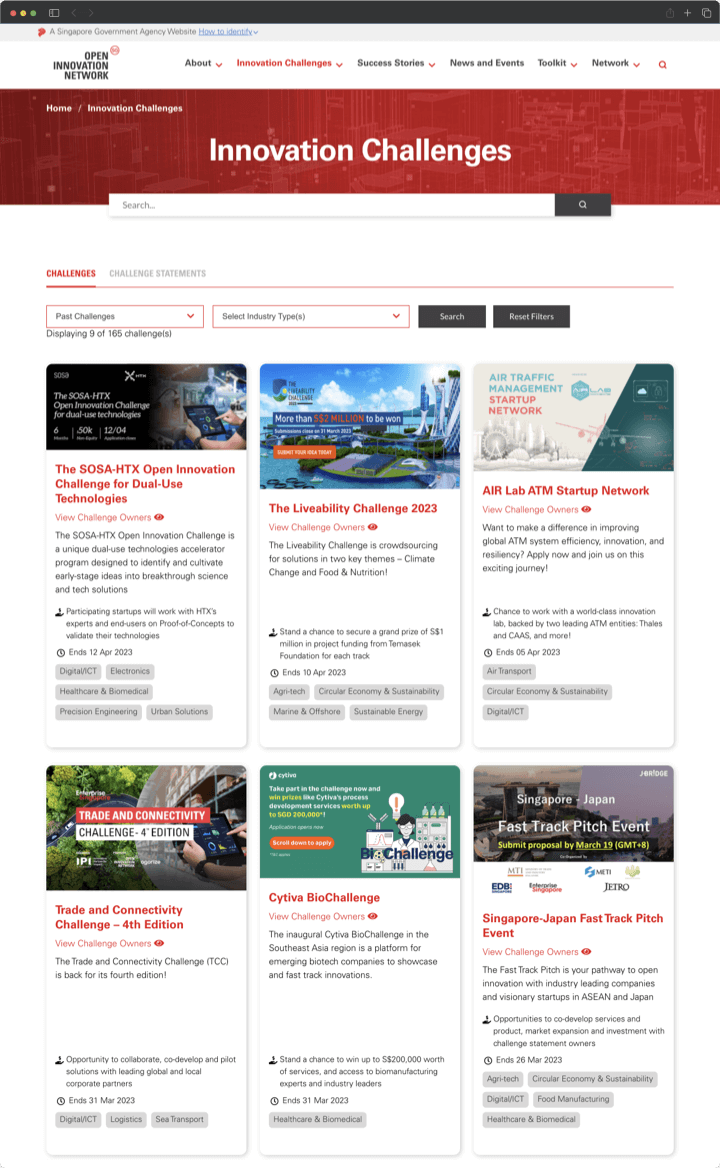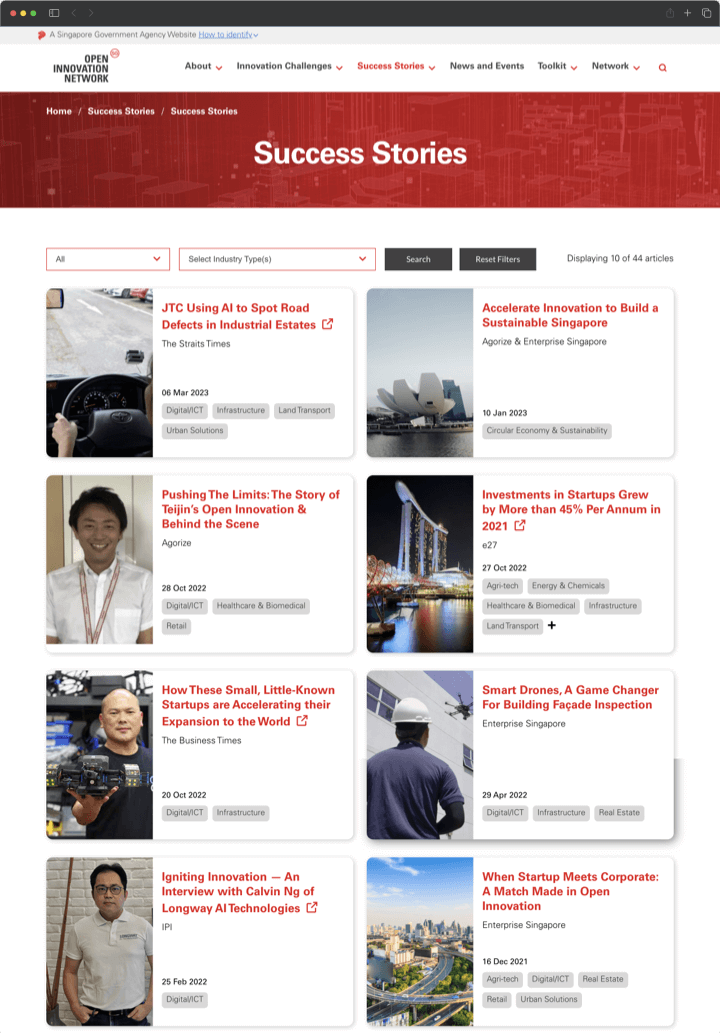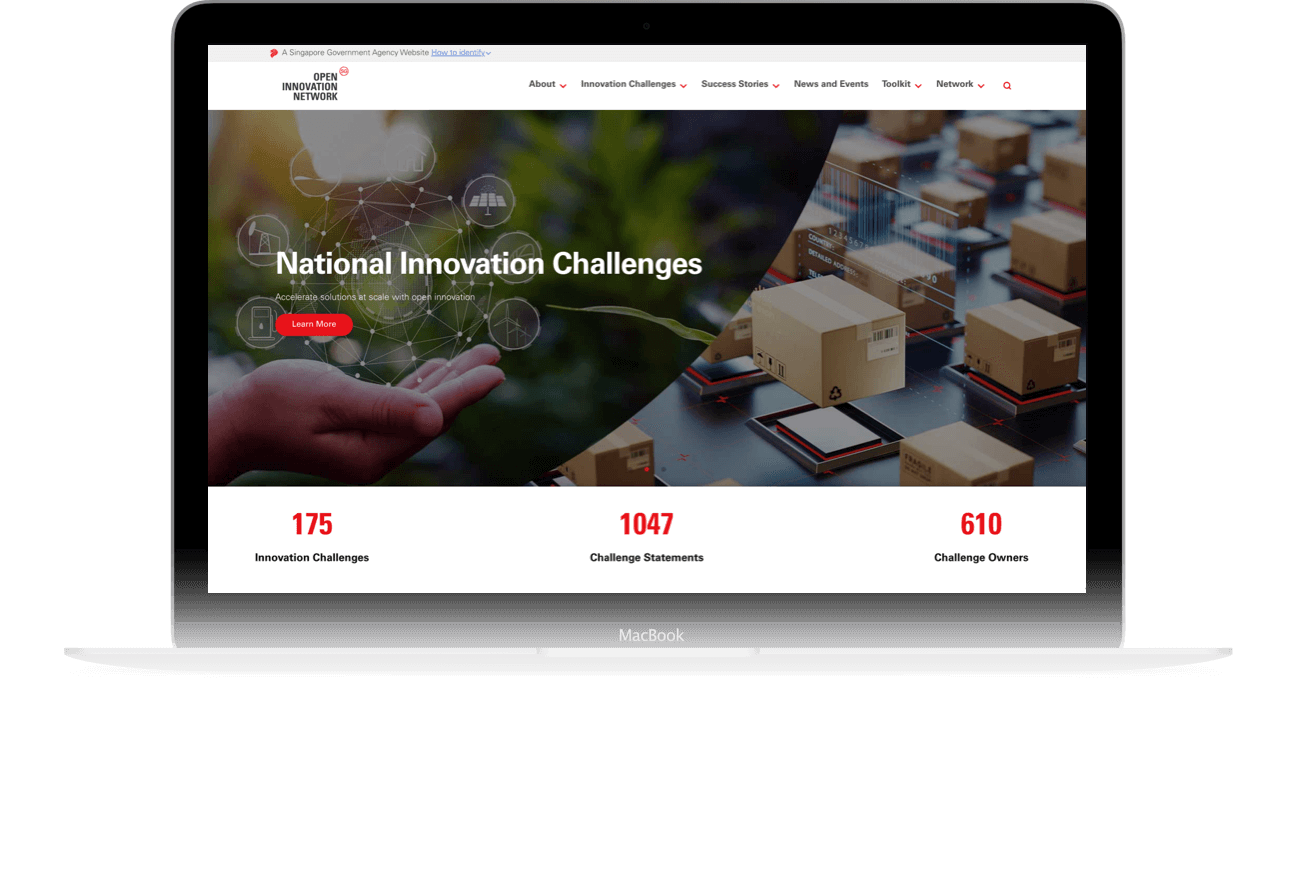
Open Innovation Network Redesign
Overview
The Open Innovation Network (OIN) is set up by Enterprise Singapore and the Infocomm Media Development Authority (IMDA) to provide a single gateway to the open innovation ecosystem in Singapore.
The objective of this project is to re-design the OIN site. Client needed a fresh revamp of their current site that would be in line with modern design trends and improve the usability of the website.
Role
Lead UX/UI Designer
Responsibilities
User Research, Wireframing and Prototyping
Problem
The OIN website looks unattractive and does not reflect the brand's image. Website also has confusing information architecture which makes it confusing for users.

